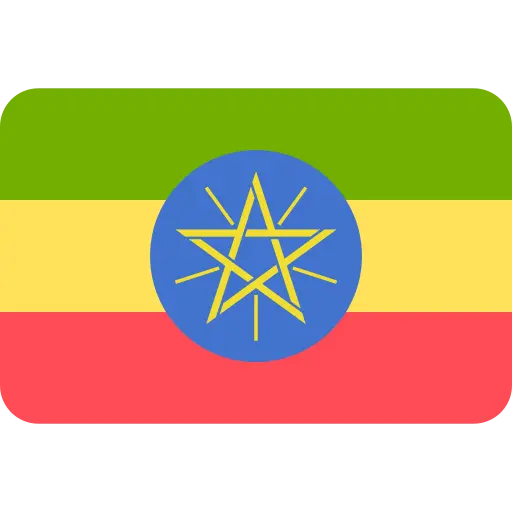Ethiopia - Country Set

Score:
0

Ethiopia 2019
Cyber Strategy Index
Score:
0
Ethiopia 2017 - 2020
Huawei Global Connectivity Index
No Data Found
Policy Development
Focus Areas
No Data Found
Ethiopia Policy Report
Overview of Ethiopia's Digital Landscape
Ethiopia, with a population of 117 million, is the second-most populous African nation. Relative to its large population, the country is considered one of the poorest in its region, with a GDP per capita of around $840 in 2019.[1] Under Prime Minister Abiy Ahmed Ali, the Ethiopian government published the policy framework Digital Ethiopia 2025 – A Digital Strategy for Ethiopia Inclusive Prosperity in 2018.[2]
Digital Ethiopia 2025: Strategic Framework
This policy initiative is a detailed framework for Ethiopia’s ambitions to modernize major industrial sectors, digital and other infrastructure, and the public sector. As the first policy of its kind in Ethiopia related to digital modernization, it represents an important part of the country's general economic and societal development. The 155-page-long policy deconstructs en détail necessary areas of development, planned and already realized projects, and bilateral partnerships.
Key Areas of Development and Chinese Partnerships
In all major areas, China is an important partner for financing and realization of essential projects. Network expansion and software solutions for “e-transactions, e-receipts, and e-signatures” are specifically identified as key areas for successful digital modernization. The Ethiopian Ministry of Innovation and Technology (MInT) is the key public agent for analysis, development, and execution of investment projects.
Collaborations with Chinese Entities
Chinese state and non-state actors have signed various agreements with MInT. These include direct cooperation between Chinese universities, student exchanges, and research cooperation. In the private sector, MInT has worked with Alibaba and other Chinese companies. The cooperation between MInT and the Beijing-based company InferVision Technology Corporation exemplifies the structure of Ethiopian-Chinese cooperation in specific digital domains. InferVision, founded in 2016, operates in North America, Europe, and Asia, and has established itself as a leading company in AI research and provider of AI analytic tools for medical care.[3] Within China, InferVision has a research network across universities and medical institutions, co-publishes various papers in western journals, and owns over 340 published and pending patents.
Memorandum of Understanding with InferVision
In 2019, InferVision and MInT signed a Memorandum of Understanding for the creation of a National Artificial Intelligence Infrastructure (NAIF). Similar close cooperations between Chinese companies and the public sector in Ethiopia were undertaken in 2018 and 2019, such as the launch of the Ethio Telecom – ZTE Joint Innovation Center,[4] the launch of Huawei CloudCampus solutions for over 300 schools and 10 universities in cooperation with Ethiopia’s Ministry of Education, and the launch of Ethiopia’s first satellite, ETRSS-1, in cooperation with the China Academy of Space Technology and the Ethiopian Space Science Technology Institute.[5][6] ETRSS-1 was realized through a financial contribution by China and the training of Ethiopian engineers and master students in China. Further bilateral agreements were signed within the same year for the launch of Ethiopia’s first telecommunications satellite.[7]
Development and Dependency
Ethiopia’s digital infrastructure developed at a very dynamic and fast pace throughout the measurement period. Infrastructure projects across various industries and public domains were either realized or in the planning stages, with major contributions from Chinese actors. The country was dependent not only on the delivery of soft- and hardware solutions by China but also on the operation and support provided by Chinese workforces and their expertise, due to a lack of qualified or trained Ethiopian personnel. Alongside the significant infrastructure investments by Chinese companies relative to Ethiopia’s GDP, the debt burden increased similarly in size and scope across private and public entities.
Selected Sources
[1] World Bank: GDP per capita - Ethiopia: https://data.worldbank.org/indicator/NY.GDP.PCAP.CD?locations=ET
[2] Digital Ethiopia 2025 – A Digital Strategy For Ethiopia Inclusive Prosperity policy framework published by the Office Of The Prime Minister of the Federal Democratic Republic of Ethiopia: https://www.pmo.gov.et/media/other/b2329861-f9d7-4c4b-9f05-d5bc2c8b33b6.pdf
[3] Introduction to InferVision Technology Corporation: https://global.infervision.com/about.html
[4] ZTE press release 2019: ZTE and Ethio Telecom Launch a Joint Innovation Center in Ethiopia: https://www.zte.com.cn/global/about/news/20190307e1.html
[5] Huawei press release 2019: Huawei Helps Ethiopian Schools Eliminate Educational Divide: https://e.huawei.com/en/case-studies/global/2019/201903291147
[6] China National Administration of GNSS and Applications (CNAGA) press release 2019: China to launch Ethiopian satellite this month: http://www.beidouchina.org.cn/hezuo/4405.html
[7] Space in Africa 2019: Ethiopia signs communications satellite development agreement with China: https://africanews.space/ethiopia-signs-communication-satellite-development-agreement-with-china/

